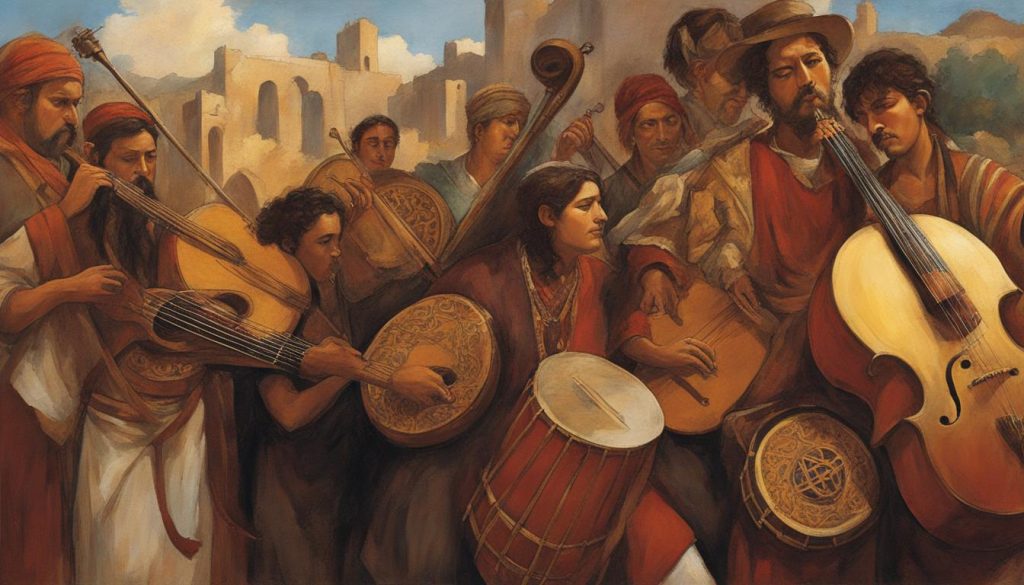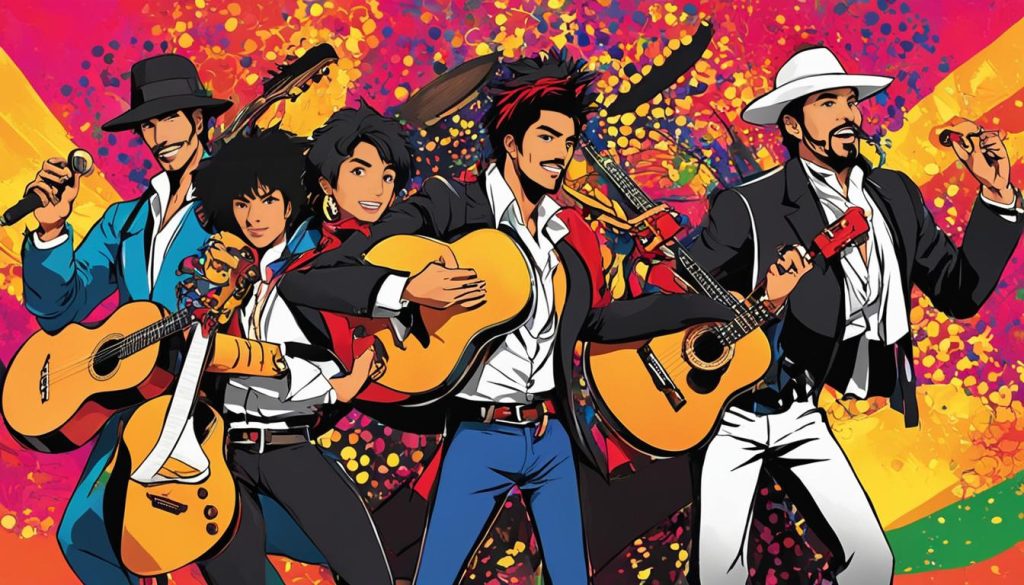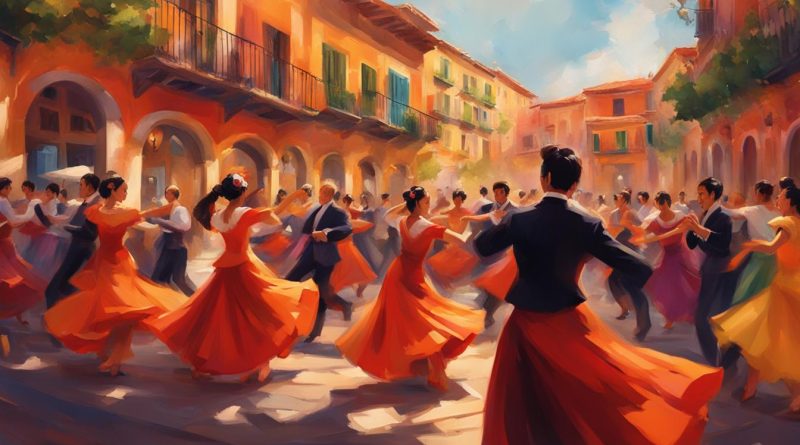Exploring the Vibrant World of Spanish Music
From the traditional rhythms of flamenco to the modern beats of reggaeton, Spanish music is a captivating genre loved by many worldwide. Spanish music has a rich history which dates back to the medieval period in Spain, where it was shaped by a variety of cultural and historical factors, from the Moorish influence to Gypsy music. This contributed to the diverse blend of ethnic and musical influences that define Spanish music. If you’re a fan of rhythmic and soulful music, then you should definitely explore the world of Spanish music.
Key Takeaways
- Spanish music has a rich history dating back to the medieval period in Spain.
- The genre of Spanish music is known for its unique blend of cultural influences.
- From the traditional rhythms of flamenco to the modern beats of reggaeton, Spanish music has something for everyone.
- The roots of Spanish music can be traced back to a variety of cultural and historical factors.
- The captivating melodies, vibrant rhythms, and rich history make Spanish music one of the most interesting genres to explore.
The Origins of Spanish Music
Spanish music has roots that run deep and wide, and its eclectic mix of traditional folk music, classical influences, and world music borrowings have all made it the vibrant genre it is today. From the influence of Moorish music during medieval times to the soulful rhythms of Andalusian gypsies, Spanish music boasts an array of fascinating origins.
Ancient Spanish folklore played a crucial role in shaping Spanish music, and it formed the foundation for many of the styles enjoyed today. The use of instruments such as the tambourine, mandolin, and guitar can be traced back to the 16th century, and they remain integral to the country’s musical heritage.
Spanish music is known for its haunting melodies and intricate rhythms. The flamenco, which originated in the southern province of Andalusia, is a classic example. It is characterized by complex guitar chords, clapping, and percussive footwork, and is regarded as one of the most passionate and emotional types of Spanish music.
The Moorish Influence on Spanish Music
The Moors were the Muslims who ruled over the Iberian Peninsula for almost eight centuries, and their musical legacy can be heard throughout Spanish music. They brought with them the oud, a stringed instrument that looks like a lute, and incorporated it into many of their compositions.
The influence of Moorish music can be heard in the music of Andalusia, where the music features Arabic lyricism and instrumentation. Andalusian music is highly respected and known for its profound influence on the origins of Spanish music.
Andalusian Gypsies and Flamenco
Andalusian gypsies have played a significant role in creating the music of Spain, particularly flamenco. Their musical traditions date back to the Middle Ages, and they brought with them a distinctive style that is evident in the rhythms and melodies of songs to this day.
Flamenco is characterized by passionate vocals and intricate guitar playing, with dancers often emphasizing the rhythm with their feet. It is a highly emotional and intense art form that often conveys heartbreak, struggle, and passion.

“Spanish music is unique because it is truly a reflection of the country’s diverse cultural heritage. From its Moorish roots to the flamenco sounds of Andalusia, its rich, varied history is apparent in every note and rhythm.” – Spanish music enthusiast
Popular Genres in Spanish Music
Spanish music has a rich history and diverse cultural influences that have led to the emergence of numerous genres that are immensely popular worldwide today. Let’s take a look at some of the most popular genres that have made significant contributions to Spanish music:
| Genre | Description | Notable Artists |
|---|---|---|
| Flamenco | A passionate, traditional Spanish music and dance form characterized by soulful vocals and intricate guitar melodies, often conveying themes of love, heartbreak, and struggle. | Carmen Linares, Vicente Amigo, Diego El Cigala |
| Rumba | A vibrant and rhythmic genre that originated in Cuban and Afro-Cuban cultures, and later spread to Spain. Rumba showcases lively beats and percussions, and is frequently accompanied by singing and improvisation. | Los Del Río, Gipsy Kings, Estopa |
| Reggaeton | A modern genre that emerged in the late 1990s and became immensely popular in Latin America and beyond. Reggaeton is characterized by a fusion of Spanish and Caribbean-style music, featuring rap-like lyrics, electronic beats, and heavy bass lines. | Daddy Yankee, Ozuna, Bad Bunny |
In addition to these genres, other notable styles of Spanish music include sevillanas, a folk dance from Seville that is often performed during annual festivals and celebrations, as well as paso doble, a lively dance and music genre that originated in Spain in the early 20th century and is characterized by its quick and rhythmic tempo.
Whether you are a long-time fan of traditional Spanish music genres like flamenco or a newcomer to the scene drawn to modern takes like reggaeton, there is no denying the unique and captivating appeal of Spanish music. The diverse range of genres offers something for everyone and continues to inspire and entertain audiences across the globe.

Conclusion
Spanish music offers a vibrant and diverse landscape that reflects the rich cultural tapestry of Spain. From its traditional roots to its modern manifestations, this genre continues to captivate audiences worldwide. By exploring the origins of Spanish music, one can appreciate the various cultural and historical influences that have shaped the music we enjoy today.
As we have seen, there are numerous genres within Spanish music, each with its own unique characteristics. Whether you prefer the passionate guitar melodies and soulful vocals of flamenco or the infectious rhythms of rumba, Spanish music has something for everyone.
Moreover, the rise of modern genres like reggaeton has propelled Spanish music to the forefront of the global music scene, further cementing its place as a beloved genre among music fans around the world. In conclusion, Spanish music has a rich history and a vibrant present, making it an ever-evolving genre that continues to inspire and transport listeners with its irresistible rhythms and melodies.
FAQ
What are some popular genres within Spanish music?
Some popular genres within Spanish music include flamenco, rumba, reggaeton, and traditional folk music.
What are the origins of Spanish music?
Spanish music has its origins in various cultural and historical influences, including the Moorish influence during the medieval period and the Gypsy music of Andalusia.
What makes Spanish music unique?
Spanish music is known for its unique blend of cultural influences, captivating melodies, vibrant rhythms, and rich history.
Are there modern genres within Spanish music?
Yes, modern genres such as reggaeton have emerged within Spanish music, combining traditional elements with contemporary beats.
How does flamenco music sound?
Flamenco music is characterized by passionate guitar melodies, soulful vocals, and expressive dance movements.
Is Spanish music popular worldwide?
Yes, Spanish music has gained popularity worldwide and continues to captivate audiences with its diverse genres and irresistible rhythms and melodies.
